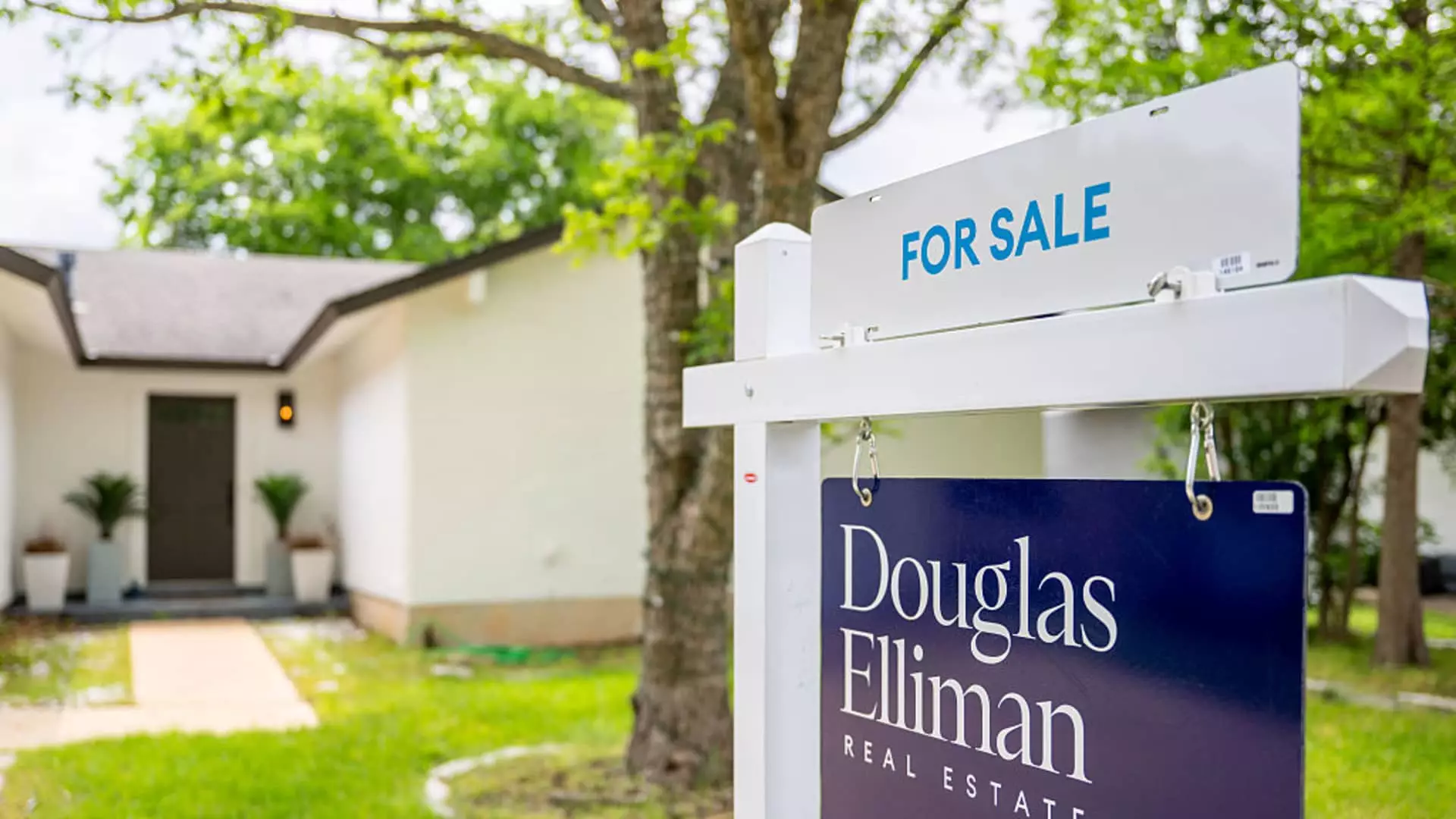As the dust settles on yet another month of tepid real estate activity, the sales figures for previously owned homes in May reveal a slight increase, contradicting the expectations of a modest downturn. The National Association of Realtors reports a rise of 0.8%, crossing the threshold of 4.03 million units on an annualized, seasonally adjusted basis. While this uptick is better than predicted levels, it barely masks an ongoing trend of stagnation. Year-over-year statistics suggest a 0.7% decline when compared to May of the previous year, raising questions as to whether this increase is a sign of lasting recovery or merely a fleeting moment in a troubled market.
Regional Disparities: A Tale of Two Markets
Diving deeper into regional performance, the narrative grows increasingly complex. The Northeast shines as a beacon of growth, boasting a commendable 4.2% month-to-month sales increase. In contrast, the West, known for its soaring prices and precarious affordability issues, witnessed a staggering decline of 5.4%. This highlights the growing chasm between different regions of the country, creating an uneven playing field that leaves many buyers, especially first-time home-seekers, in the lurch. Given that the West represents the highest home prices as indicated by the NAR, it begs the question—are we witnessing a regional bifurcation that could have long-standing implications for national economic stability?
The Impact of Rising Mortgage Rates
The role of financing in housing sales cannot be understated. Lawrence Yun, the chief economist of NAR, pointed out that high mortgage rates have acted as significant barriers to entry for many potential buyers. After remaining stable, rates surged over 7% in April, creating an environment of apprehension and caution. Potential homebuyers and sellers alike are left in a holding pattern, stymied by uncertainties tied to interest rate fluctuations. While some experts argue that decreasing rates in the latter half of the year may catalyze a surge in home sales, the reality remains that these predictions afford no solace to those already priced out of the market.
Supply and Demand: The Bulwark Against Price Drops
The surge in available inventory—with 1.54 million homes listed, a startling 20% increase from the previous year—seems to provide a glimmer of hope. Yet, at a supply pace indicating a 4.6-month buffer, it remains historically low, which continues to exert upward pressure on prices. The May median price of existing homes reached a record high of $422,800, marking a year-over-year increase of 1.3%. This price escalation illustrates the persistent imbalance between supply and demand, forcing nearly a third of homes to sell above their listing prices. Although this statistic signifies competition among buyers, it starkly contrasts the reality faced by those unable to keep up with escalating costs.
The Luxury Market: An Unfamiliar Terrain
Interestingly, the higher-end market, once a robust pillar of real estate, has begun to show signs of fatigue. For the past two years, luxury properties consistently outperformed their less expensive counterparts, but recent data suggests this momentum may be waning. With a decline in sales for homes priced over $1 million, it raises questions about the stability of wealth-driven demand, especially as stock market volatility casts a shadow on potential buyers’ confidence. The slight uptick in transactions for homes priced between $750,000 and $1 million draws attention, but it hardly compensates for the wider plunge felt across the luxury spectrum.
First-Time Buyers: The Overlooked Demographic
Amid these unsettling trends lies an alarming statistic: only 30% of buyers in the market are first-timers—a decrease from 31% last year. This persistent reduction not only reflects the increasingly inaccessible landscape for new entrants but raises significant long-term concerns about homeownership and generational wealth building. As the market continues to evolve, first-time buyers—an essential component for a vibrant housing market—are being systematically pushed aside, lacking the resources required to enter or compete.
While there are glimpses of growth and opportunity within the housing market, the foundations remain fragile. The interplay of high mortgage rates, regional disparities, supply constraints, and a dwindling number of first-time buyers presents a daunting challenge. The rhetoric of economists may offer glimmers of optimism, but for many, the reality is one of uncertainty and exclusion in an already precarious and evolving landscape.


Leave a Reply